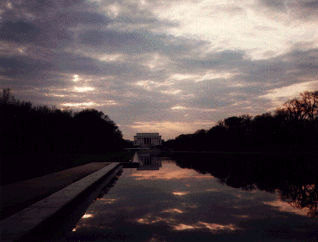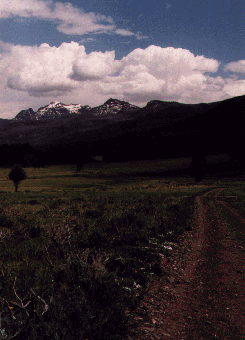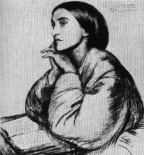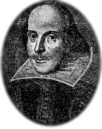
"All who have ambitions to literary excellence in
democratic nations should ever refresh themselves at classical springs; that
is the most wholesome medicine for the mind. Not that I hold the classics
beyond criticism, but I think they have special merits well calculated
to counterbalance our peculiar defects. They provide a prop just where
we are most likely to fail."
Alexis D'Tocqueville, "Democracy in America"

|
Lincoln Memorial and Reflecting Pool, Washington
D.C.
|
The Forms of Prose
Allegory. An allegory is an extended metaphor
or series of metaphors embedded within a narrative, usually for the
purpose of relating a deeper meaning through symbolic characters, settings,
and actions. Put more simply, it is a story that works on two levels:
the surface level, where the characters and their actions are meant to
be taken literally, and the metaphorical level, where the characters
and their actions are meant to symbolize more abstract ideas. In terms
of literary history, an allegory was traditionally a work of poetry.
We include it in this section because the majority of allegories most
familiar to modern readers are works of prose. Examples of modern allegory
include Animal Farm by George Orwell and, arguably, The Wizard
of Oz by Frank Baum.
History. Though something of a lost art, classical
histories were as much an exercise in epic story-telling as a relation
of fact. Authors such as Herodotus, Livy, and Tacitus used towering prose
and often went so far as to invent the speeches of military and political
leaders to embellish the text. Indeed, many of the masterful translations
of these ancient historians done by 19th century academics are nothing
short of works of art themselves.
Historical fiction, the modern offspring of the classical history,
has achieved a high degree of modern success, while concentrating more
on creating a captivating story than on getting the facts straight.
A good example of the intersection of the classical history and historical
fiction is I, Claudius by Robert Graves.
Description of the Battle of Adrianople by Ammianus Marcellinus,
a Roman historian of the 4th century AD
Then, having traversed the broken ground which divided the two armies,
as the burning day was progressing toward noon, at last, after marching
eight miles, our men came in sight of the wagons of the enemy, which had
been reported by the scouts to be all arranged in a circle. According
to their custom, the barbarian host raised a fierce and hideous yell, while
the Roman generals marshaled their line of battle.
While arms and missiles of all kinds were meeting in fierce conflict...
our men began to retreat; but presently, aroused by the reproaches of
their officers, they made a fresh stand, and the battle increased like
a conflagration, terrifying our soldiers, numbers of whom were pierced
by strokes of javelins hurled at them, and by arrows.
Then the two lines of battle dashed one against the other, like the
prows of ships. Thrusting mightily, they were tossed to and fro like
waves of the sea. Our left wing had advanced actually up to the wagons,
intending to push on still farther if properly supported. But they were
deserted by the rest of the cavalry. They were so much pressed by the
superior numbers of the enemy that they were overwhelmed and beaten down
like the ruins of a great rampart.
Novel. When compared with many of the genres
listed below, the novel is a relative late bloomer. The word itself
is derived from the Italian novella, which can mean something new
or fresh, news or tidings. It is often assumed that the origin of the
novel can be traced only to late Middle Ages and works such as The
Decameron of Boccaccio, a series of short, often bawdy stories
intertwined around a central plot. However, the history of the novel may
be traced back even further, as Boccaccio himself lifted several of his
stories wholesale from an ancient Roman work called The Metamorphoses
(also known as The Golden Ass ). This work was written
by a North African Roman by the name of Apuleius of Madauros in the 2nd
century AD.
Clearly, however, though its history is ancient, the preeminence
of the novel as a literary form has only been achieved within the last
300 years. Robinson Crusoe and Moll Flanders by Daniel
Dafoe are among the first novels to emerge from England. Over the succeeding
centuries, interest in the genre grew by leaps and bounds, to the point
where it is now clearly the favored form and has differentiated itself
into dozens of sub-genres.
Generally speaking, a novel is simply an extended fictitious
narrative written in prose. Its length permits it to delve more deeply
into characters and plot, allowing for intricacies that are difficult
to achieve in other forms. The freedom of prose, as opposed to strictures
of verse, allow the novel to be accessible to a greater number of authors
and readers, and perhaps accounts for the incredible modern popularity
of the genre in an age of near universal literacy.
From The Adventures of Huckleberry Finn by Mark
Twain
Now the way that the book winds up is this: Tom and me found the
money that the robbers hid in the cave, and it made us rich. We got
six thousand dollars apiece -- all gold. It was an awful sight of money
when it was piled up. Well, Judge Thatcher he took it and put it out
at interest, and it fetched us a dollar a day apiece all the year round
-- more than a body could tell what to do with. The Widow Douglas she
took me for her son, and allowed she would sivilize me; but it was rough
living in the house all the time, considering how dismal regular and decent
the widow was in all her ways; and so when I couldn't stand it no longer
I lit out. I got into my old rags and my sugar-hogshead again, and was free
and satisfied. But Tom Sawyer he hunted me up and said he was going to
start a band of robbers, and I might join if I would go back to the widow
and be respectable. So I went back....
Romance. The origin of the romance was a fictional,
usually fantastic, story of courtly adventure; very few contained significant
love stories, as in the romance novel of today. Common themes or "matters"
during the heydey of the medieval romance included stories from classical
antiquity, the French chansons de gestes about the court of
Charlemagne, and the English romances concerning Arthur and the knights
of the Round Table. In the last century, the term romance has been
used to refer to novels with fantastic and allegorical plots, such as
those of American writers such as Nathaniel Hawthorne and Herman Melville.
Chretien De Troyes, from "Lancelot, or the Knight of
the Cart"
Since my lady of Champagne wishes me to undertake to
write a romance, I shall very gladly do so, being so devoted to
her service as to do anything in the world for her, without any intention
of flattery.... Here Chretien begins his book about the Knight of
the Cart. The material and the treatment of it are given and furnished
to him by the Countess, and he is simply trying to carry out her
concern and intention. Here he begins the story.
Upon a certain Ascension Day King Arthur had come from
Caerleon, and had held a very magnificent court at Camelot as was
fitting on such a day. After the feast the King did not quit his
noble companions, of whom there were many in the hall. The Queen was
present, too, and with her many a courteous lady able to converse in
French. And Kay, who had furnished the meal, was eating with the others
who had served the food. While Kay was sitting there at meat, behold
there came to court a knight, well equipped and fully armed, and thus
the knight appeared before the King as he sat among his lords...
Short Story. A brief narrative work of fiction. Though
short story formulas and styles have varied greatly over the centuries,
generally speaking, the short story attempts to convey a large idea,
emotion, or sensation in a very small package. While it shares certain
narrative and stylistic characteristics of the novel, the restricted scale
of the short story precludes significant plot or character development.
Notable examples of this genre include The Telltale Heart by Edgar
Allan Poe or The Gift of the Magi by O. Henry.
From Rappaccini's Daughter by Nathaniel Hawthorne
An impulsive movement of Giovanni drew her eyes to the window.
There she beheld the beautiful head of the young man--rather a Grecian
than an Italian head, with fair, regular features, and a glistening of
gold among his ringlets--gazing down upon her like a being that hovered
in mid-air. Scarcely knowing what he did, Giovanni threw down the bouquet
which he had hitherto held in his hand.
"Signora," said he, "there are pure and healthful flowers.
Wear them for the sake of Giovanni Guasconti!"
"Thanks, Signor," replied Beatrice, with her rich voice that
came forth as it were like a gush of music; and with a mirthful expression
half childish and half woman-like. "I accept your gift, and would fain
recompense it with this precious purple flower; but if I toss it into the
air, it will not reach you. So Signor Guasconti must even content himself
with my thanks." She lifted the bouquet from the ground, and then as if
inwardly ashamed at having stepped aside from her maidenly reserve to respond
to a stranger's greeting, passed swiftly homeward through the garden. But,
few as the moments were, it seemed to Giovanni when she was on the point
of vanishing beneath the sculptured portal, that his beautiful bouquet
was already beginning to wither in her grasp. It was an idle thought; there
could be no possibility of distinguishing a faded flower from a fresh one,
at so great a distance.

|
Yellowstone National Park, Wyoming
|
The Forms of Poetry
Lyric Poetry
Ballade. The ballade form, used
in both poetry and music, is made up of four stanzas: the first three
having 8 or 10 lines, and the fourth stanza having 4 or 5.
Carol. Originally a musical form,
the carol is a poem of joy, in celebration of a religious or seasonal
festival. Carols are particularly associated with Christmas, but Easter
and other carols have also been written.
Christina Rossetti: "A Christmas Carol"
Before the paling of the stars,
Before the winter morn,
Before the earliest cock-crow
Jesus Christ was born:

|
|
Christina Rossetti
|
Born in a stable,
cradled in a manger
In the world his hands had made
Born a stranger.
Priest and King lay fast asleep
In Jerusalem,
Young and old lay fast asleep
In crowded Bethlehem:
Saint and Angel, ox and ass,
Kept a watch together,
Before the Christmas daybreak
In the winter weather.
Jesus on his Mother's breast
In the stable cold,
Spotless Lamb of God was He,
Shepherd of the fold:
Let us kneel with Mary Maid,
With Joseph bent and hoary,
With Saint and Angel, ox and ass,
To hail the King of Glory.
Elegy. A poem of mourning for the
dead.
Epigram. A very short poem, which
usually begins fairly innocently but ends with a witty or satirical
punchline. The Roman poet Martial (A.D. 40?-104?) wrote many epigrams,
and standardized the modern form. The rhyme scheme is generally abcb
or abab.
Martial
Mycilla dyes her locks, 'tis said,
But 'tis a foul aspersion.
She buys them black, they therefore need
no subsequent immersion.
Limerick. A light, usually humorous
form of five lines which originated in Limerick, Ireland. Rhyme scheme:
aabba
There was a young lady of Lynn
Who was so uncommonly thin
That when she essayed
to drink lemonade
She slipped through the straw and fell in.
Idyll. (also idyl). A pastoral
poem extolling the virtues of simple country life, usually set among
peasants or shepherds. Classical examples include the Idylls of
Theocritus and Vergil's Eclogues. Also called the pastoral, eclogue,
or bucolic.
Ode. A poem of praise which has
its roots in the classical poetry of Pindar and Horace.
Sonnet. The sonnet is one of the
more traditional and formal of the poetic styles in English. It is
almost always written in iambic pentameter. There are two forms to
the sonnet. The Petrarchan or Italian sonnet has two stanzas of eight
lines (the octave) and six lines (the sestet) respectively, with rhyme
schemes of abbaabba and either cdcdcd or cdecde. The Shakespearean
or English sonnet has three stanzas of four-lines (quatrains), and
a final two-line stanza (the couplet), so that the total rhyme scheme
is abab cdcd efef gg. Thematic organization usually consists of the
statement of a theme, idea or question in the octave or quatrains,
and a concluding comment or response in the final sestet or couplet.
Italian Sonnet: John Keats, "On First Looking into Chapman's
Homer"
Much have I traveled in the realms of gold,
And many goodly states and kingdoms seen;
Round many western islands have I been
Which bards in fealty to Apollo hold.
Oft of one wide expanse had I been told
That deep-browed Homer ruled as his demesne;
Yet did I never breathe its pure serene
Till I heard Chapman speak out loud and bold:
Then felt I like some watcher of the skies
When a new planet swims into his ken;
Or like stout Cortez when with his eagle eyes
He stared at the Pacific--and all his men
Looked at each other with a wild surmise--
Silent, upon a peak in Darien.
English Sonnet: William Shakespeare, Sonnet 116

|
|
William Shakespeare
|
Let me not to the marriage of true minds
Admit impediments. Love is not love
Which alters when it alteration finds,
or bends with the remover to remove.
Oh, no! It is an ever-fixed mark
That looks upon tempests and is never shaken;
It is the star to every wandering bark,
Whose worth's unknown, although his height be taken.
Love's not Time's fool, though rosy lips and cheeks
Within his bending sickle's compass come;
Love alters not with his brief hours and weeks,
But bears it out even to the edge of doom.
If this be error and upon me proved,
I never writ, nor no man ever loved.
Narrative Poetry
Ballad. At heart the ballad is
a folk form, shorter than the epic and usually treating an incident
of local rather than national importance. Its language is often folksy,
and may be written in a regional dialect. The subject matter and its
treatment are thus somewhat less exalted than those of the epic, and
the protagonist is generally a folk hero such as the English outlaw
Robin Hood or the American railroad engineer Casey Jones. The traditional
English ballad has four-line stanzas in which lines two and four rhyme,
thus abcb.
Robert Service, from "The Shooting of Dan McGrew"
A bunch of the boys were whooping it up
In the Malamute saloon;
The kid that handles the music-box
Was hitting a jag-time tune;
Back of the bar, in a solo game,
Sat Dangerous Dan McGrew,
And watching his luck was his light-o'-love,
The lady that's known as Lou.
When out of the night, which was fifty below,
And into the din and the glare,
There stumbled a miner fresh from the creeks,
Dog-dirty, and loaded for bear.
He looked like a man with a foot in the grave
And scarcely the strength of a louse,
Yet he tilted a poke of dust on the bar,
And he called for drinks for the house.
There was none could place the stranger's face,
Though we searched ourselves for a clue;
But we drank his health, and the last to drink
Was Dangerous Dan McGrew.
Epic Poem. The epic or narrative
poem is the oldest, most widespread, and most highly developed literary
form, treating grand nationalistic themes, particularly war, with
a highly polished and exalted language. It is usually set in an earlier
heroic or mythic age with an idealized hero in battle against a common
enemy. An epic cycle is a collection of epics that revolve around a particular
episode (such as the Trojan War cycle). Examples of the classic epic poem
include the Epic of Gilgamesh , Homer's Iliad and
Odyssey , Vergil's Aeneid , Beowulf
, the Nibelunglied and The Song of
Roland . Religion and philosophy have always figured prominently,
particularly in the Indian Mahabharata and
Ramayana , and in the last millenium Europeans have used the
epic for purely Christian subjects, such as Dante's Divine
Comedy and Milton's Paradise Lost . Many of the poems
now extant were not authored by a single person but gradually evolved
over hundreds of years of oral retelling and were only later written
down. Because the epic was originally sung from memory and to some degree
improvised, it often featured certain stock formulas from which the singer
could draw. The spread of literacy has transformed what was once an anonymous
oral story into a deliberately written composition, but many features, such
as the extensive use of simile, heroic epithets and alliterative phrasing
have remained. It is impossible to generalize the actual literary technique
of epic poetry; as a form with strong folk roots it is extremely varied
and each area has evolved its own particular style. The Old English or Anglo-Saxon
epic contained no end rhyme and had four alliterative stresses per line;
in the Modern English period unrhymed iambic pentameter has been the preferred
form.
From Beowulf (translation by Michael Alexander):
Attend!
We have heard of the thriving of the throne of Denmark,
how the folk-kings flourished in former days,
how those royal athelings earned that glory.
Was it not Scyld Shefing that shook the halls,
took mead-benches, taught encroaching
foes to fear him - who, found in childhood,
lacked clothing? Yet he lived and prospered,
grew in strength and stature under the heavens
until the clans settled in the sea-coasts neighbouring
over the whale-road all must obey him
and give tribute. He was a good king!
A boy child was afterwards born to Scyld,
a young child in hall-yard, a hope for the people,
sent them by God; the griefs long endured
were not unknown to Him, the harshness of years
without a lord. Therefore the Life-bestowing
Wielder of Glory granted them this blessing.
Through the northern lands the name of Beow,
the son of Scyld, sprang widely.
For in youth an atheling should so use his virtue,
give with a free hand while in his father's house,
that in old age, when enemies gather,
established friends shall stand by him
and serve him gladly. It is by glorious action
that a man comes by honour in any people.






